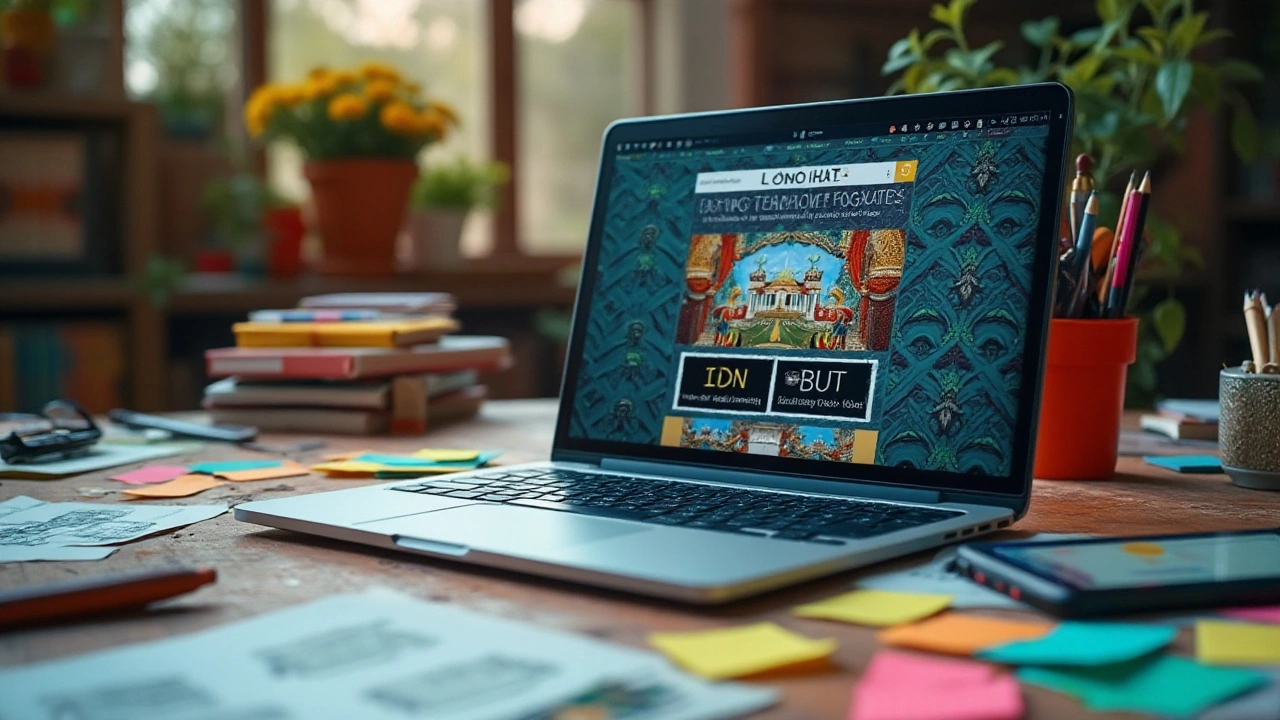In the digital realm, website cloning is akin to being handed a recipe where the possibilities are endless. With the right tools, anyone can take the design of an existing site and mold it into something uniquely their own. The process can be simplified with free website builders, offering both novice and seasoned developers a playground of creativity.
However, before diving into cloning, it is crucial to grasp the nuances involved. This includes not only familiarity with various tools but also understanding the ethical lines you shouldn't cross. Legalities are as much a cornerstone of this practice as creativity is. It's all about striking a balance.
Once these are clear, the real fun begins. Imagine taking a web template and transforming it, bit by bit, into your reflection. Whether you're enriching it with new features or reshaping its aesthetic entirely, the creative reigns are yours to hold. The journey to making a cloned website your own starts with learning, exploring, and experimenting.
- Understanding Website Cloning
- Tools and Platforms for Cloning
- Legal Considerations
- Personalizing Your Cloned Site
Understanding Website Cloning
Website cloning is a fascinating concept in the world of web design and development. It involves creating a duplicate of an existing website's structure, design, or content, essentially taking a blueprint of what already exists and making a reimagined version. While it may sound simple, there's a lot that goes into the process, and understanding the intricacies can open a world of opportunities for digital creators.
At its core, website cloning is driven by a need to replicate the appeal or functionality of a site that has succeeded in engaging its audience effectively. This could be anything from the layout's visual appeal, the seamless user experience (UX) it provides, or the technical architecture that powers its functionality. However, it's not just about copying exactly—it's about learning what works and tailoring it to fit a new context or purpose.
The practice of cloning isn't new by any means. Businesses, especially startups and small enterprises, often resort to it when they want to leverage successful design principles without reinventing the wheel. A cloned site acts as a starting point, a canvas ready for customization. This method not only speeds up the development process but also significantly reduces costs, making it an attractive option.
It's interesting to note how website cloning interplays with innovation. As with any form of creative endeavor, inspiration is vital, and cloning can serve as a vehicle for innovation. According to a study published by MIT, nearly 80% of our innovations are incremental improvements inspired by existing models. The key lies in knowing how to balance inspiration with originality—taking a known recipe and adding your special ingredient.
"The secret of successful cloning lies not in what you take, but in how you take it and reinvent it," says John Maeda, a respected graphic designer and technologist.
While the idea of cloning might seem daunting, it's important to remember the availability of tools tailored to simplify the process. From intuitive platforms like WordPress with its wide array of themes and templates to other drag-and-drop builders, there's something for everyone, regardless of your technical skill level. Such tools not only facilitate design but also offer insights into coding, often providing a dual advantage.
In practice, cloning requires attention to detail and a strategic approach. Start by analyzing the core elements of the website you wish to emulate—these might include visual hierarchy, color schemes, typography, and responsive design elements. Then, consider how these attributes align with the goals of your cloned site. It's not merely about looking good; it's about ensuring the design serves the purpose and audience it's intended for.
Finally, remember that while cloning a website is about replication, creativity should never take a backseat. It's about turning the ordinary into the extraordinary and delivering a product that resonates with users. With a thoughtful approach and the right tools, website cloning can lead to compelling digital experiences, always pushing the boundaries of what the web can offer.

Tools and Platforms for Cloning
Website cloning, in the hands of the skilled, is much like the art of replication with customization. The modern digital landscape is rich with tools designed to ease the process, whether you aim to mirror an entire web interface or just a portion of it. If you're a beginner stepping into this domain, it's crucial to weigh your options — deciding between fully featured cloning tools or more basic solutions tailored to your immediate needs. Website cloning starts with understanding what each tool brings to the table and how well these align with your project goals.
One of the popular choices by many is HTTrack. This free software provides a seamless way to download a complete site from the internet to your local storage. It efficiently arranges the original site’s relative link structure, a feature handy for offline browsing or further customization. Another noteworthy mention is SiteSucker, predominantly utilized by Mac users. It mirrors site structures effectively, preserving the aesthetics and functionality in a local format.
Those keen on incorporating a free website builder should recognize the advantage platforms like Wix and Weebly offer. These platforms are incredibly user-friendly, ensuring that anyone, regardless of their technical know-how, can recreate web experiences without hassle. They facilitate drag-and-drop features, making modification straightforward and fun. Interestingly, according to a survey by XYZ Digital, 78% of web designers appreciate the intuitive nature of these platforms for initial draft creations.
A renowned digital strategist once noted, "The genius of web design lies not just in creation from scratch but in the art of thoughtfully adapting existing canvases to tell new stories."
On a more advanced scale, web developers may resort to tools like Wondershare’s Mockitt. It goes beyond simple site cloning, also offering wireframing, prototyping, and collaboration capabilities. Its flexibility can foster full-scale web development projects from inception to final execution. Navigating through these choices might seem overwhelming, but Microsoft conducted a usability experiment with CloneZone and found that new users could replicate and modify complete web structures with considerable ease, achieving proficient results within just a few weeks.
| Tool/Platform | Key Features | Ideal For |
|---|---|---|
| HTTrack | Complete site download and offline view. | Beginners, offline site access. |
| SiteSucker | Mac-exclusive, mirror site functionality. | Mac Users, localized site reproduction. |
| Wix | Drag-and-drop site creation. | Newcomers, quick site setups. |
| Mockitt | Wireframing and prototyping. | Professional developers, complex projects. |
In choosing the right tool, consider the budget — while many of these tools and platforms are either free or come with a free tier, some advanced features may incur costs. Remember, the ultimate goal is to take the skeleton of a project and infuse it with new life and creativity. As you explore options, keep in mind that each tool has its unique forte, and selecting one depends largely on the simplicity or complexity of the web design project you're undertaking.

Legal Considerations
The realm of website cloning is a fascinating one, yet it drapes itself with a cloak of legal implications that every budding web developer must navigate with caution. Before diving headfirst into copying the web designs at your disposal, it's crucial to grasp the distinction between what is permissible and what crosses into infringement territory. Legal considerations are not just bureaucratic hurdles; they are the foundation ensuring that creativity flourishes without stepping on the toes of intellectual property rights.
The first thing to understand is the difference between design and content copyright. Websites comprise a unique blend of design (layouts, color schemes) and content (text, images). While the layout can sometimes be replicated with the use of free website builders, the content, especially text and media, is usually protected by copyright. Republishing content without permission can lead to legal actions. According to the Digital Millennium Copyright Act (DMCA), the use of copyrighted material without authorization can result in your hosting provider taking the site down on request from the content owner. This emphasizes the importance of using royalty-free or original content in your cloned websites.
Ethics in cloning often walk hand in hand with legality. Cloning should not become an exercise in duplication but rather a springboard for innovation. Ethics can sometimes be subjective, but steering clear of complete mimicry is a universally appreciated standard. Interestingly, the legal perspective encourages uniqueness and creativity. The concept of fair use can sometimes be applicable, allowing limited use of copyrighted material. It is primarily defined by the nature of use—whether it is for commercial purposes or for educational and transformative purposes. Of course, this comes with limitations and should be approached with caution.
The concept of fair use is complex, and, as Neil Gaiman, an acclaimed novelist once remarked, "Even if it's complicated legally, morally it often comes down to what you take without giving back." His insight sheds light on both the challenges and the merits of creating something original from the resources you have.
Another critical aspect to consider is the potential for trademark infringement. Websites often host distinct branding elements, such as logos and product names, which are often trademarked. Using these elements without permission can lead to legal battles. Before using any brand-related design elements in your project, thorough research should precede your actions. Always ensure these elements are either replaced with your original designs or appropriately licensed for use.
Open source licenses can sometimes offer reprieve, providing a legal framework for building upon another's work, provided you comply with the stipulated terms. Many free website builders may incorporate certain open-source components, giving users a community-backed foundation to work on while assuring legality. The key is to respect the conditions set forth by these licenses—such as attribution requirements—and use them as guides to safely navigate the world of website development.

Personalizing Your Cloned Site
Once you've cloned a website, the journey of personalized transformation begins. The initial step in this creative process is to decide on the areas you wish to change. Start by focusing on the themes and layouts because these are the first elements that will define the look and feel of your site. Most free website builders offer a variety of templates that can be customized. This allows you to adapt colors, fonts, and alignments to resonate with your brand's identity. Ensure your color palette aligns with the emotion you want to convey. For instance, blue often symbolizes trust and calmness, while red can evoke passion or urgency.
A compelling way to distinguish your website cloning endeavor is by enriching the content. High-quality content is more than just words; it's about engaging your audience. Thoughtfully tailored text that addresses the specific needs and questions of your potential visitors can enhance the user experience. Consider integrating multimedia elements like images and videos to provide a richer narrative. This not only breaks the monotony of textual content but also appeals to users who prefer visual consumption. Remember, any media you use should be properly licensed or created by you to avoid copyright issues.
Navigation is another critical element. An intuitive navigation menu guides users seamlessly through your site without confusion. Adjusting the navigation to include only necessary links helps keep the interface clean and user-friendly. Enrich the user journey by utilizing tools like heatmaps to understand which areas of your site attract the most attention. This data helps in refining the placement of essential buttons and content that drive engagement. A streamlined navigation structure significantly boosts the effectiveness of web design efforts.
Another layer of personalization is adding interactive elements. Features such as chatbots, polls, or quizzes can make the experience memorable and interactive. These elements not only engage users but also provide valuable insights into their preferences and behaviors. For a data-driven strategy, incorporating analytics tools enables you to track user interactions and adjust your approach based on real-time data. A quotation from Steve Krug's book,
Don't Make Me Think: A Common Sense Approach to Web Usability, emphasizes this perfectly: “It doesn’t matter how many times I have to click, as long as each click is a mindless, unambiguous choice.” By ensuring every interaction is straightforward and enriching, you're not just personalizing, but also humanizing the site experience.
Implementing Feedback Mechanisms
Feedback is an underutilized goldmine in the realm of web development. Implement systems for customer feedback, perhaps via email surveys or comment sections. These insights are invaluable; they highlight the strengths you should capitalize on and the weaknesses that need improvement. Once you have this data, don't just shelve it—act upon it. Regularly revisiting and refining your website based on user feedback embeds a culture of continuous improvement, which is vital in the ever-evolving digital landscape. Moreover, actively involving users in this process makes them feel part of your brand's journey, fostering loyalty and trust.Personalizing your cloned site is not merely about aesthetics or functionality; it's about crafting an experience that aligns with your vision while meeting the needs of your users. It's a meticulous process where each tweak brings you closer to a final product that feels uniquely yours, despite its origins. Whether you're a budding designer or a seasoned developer, the art of making a cloned website your own lies at the intersection of imagination and diligence. By embracing both, the results can be nothing short of spectacular.
